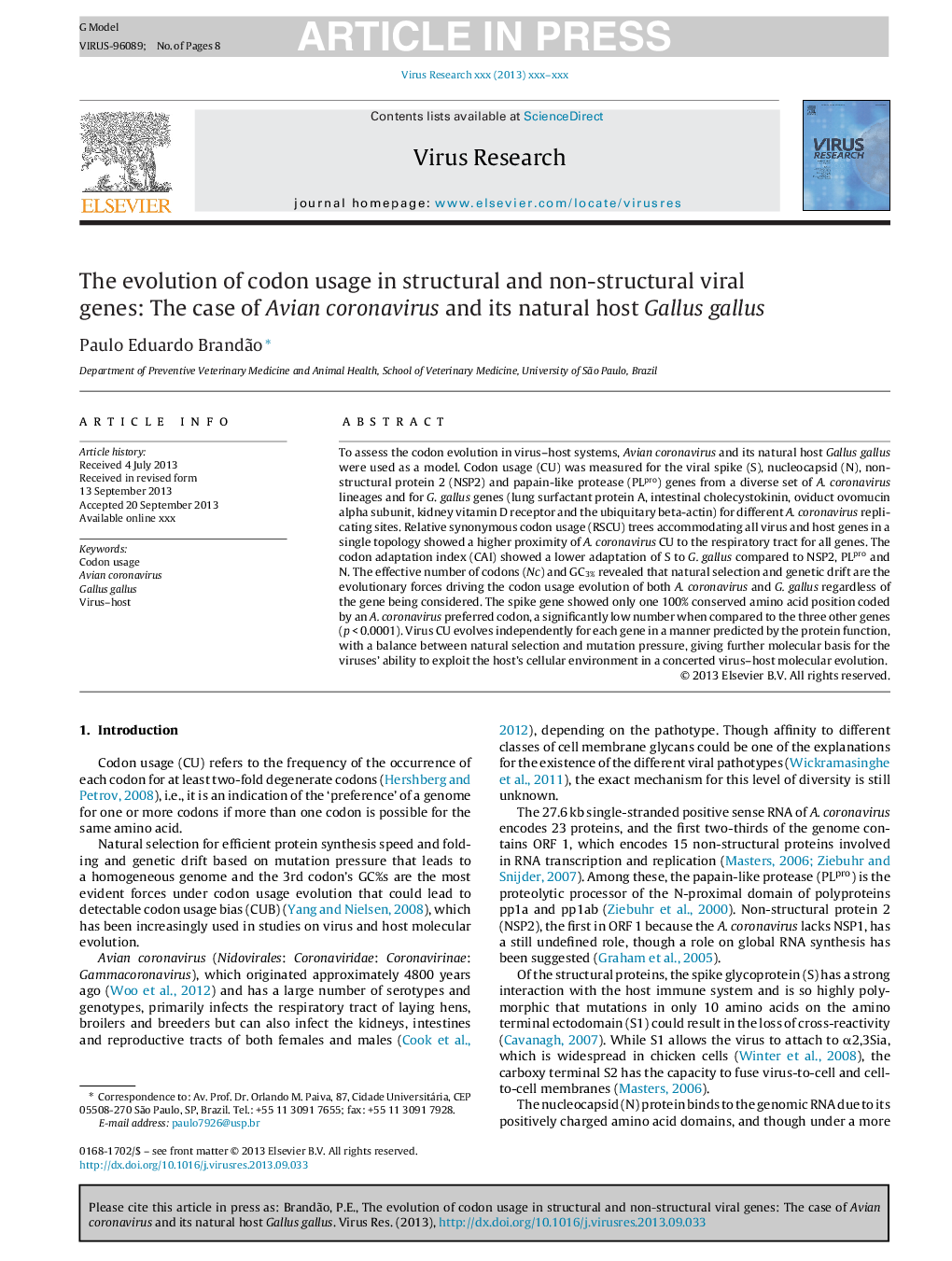| Article ID | Journal | Published Year | Pages | File Type |
|---|---|---|---|---|
| 6142669 | Virus Research | 2013 | 8 Pages |
Abstract
To assess the codon evolution in virus-host systems, Avian coronavirus and its natural host Gallus gallus were used as a model. Codon usage (CU) was measured for the viral spike (S), nucleocapsid (N), nonstructural protein 2 (NSP2) and papain-like protease (PLpro) genes from a diverse set of A. coronavirus lineages and for G. gallus genes (lung surfactant protein A, intestinal cholecystokinin, oviduct ovomucin alpha subunit, kidney vitamin D receptor and the ubiquitary beta-actin) for different A. coronavirus replicating sites. Relative synonymous codon usage (RSCU) trees accommodating all virus and host genes in a single topology showed a higher proximity of A. coronavirus CU to the respiratory tract for all genes. The codon adaptation index (CAI) showed a lower adaptation of S to G. gallus compared to NSP2, PLpro and N. The effective number of codons (Nc) and GC3% revealed that natural selection and genetic drift are the evolutionary forces driving the codon usage evolution of both A. coronavirus and G. gallus regardless of the gene being considered. The spike gene showed only one 100% conserved amino acid position coded by an A. coronavirus preferred codon, a significantly low number when compared to the three other genes (p < 0.0001). Virus CU evolves independently for each gene in a manner predicted by the protein function, with a balance between natural selection and mutation pressure, giving further molecular basis for the viruses' ability to exploit the host's cellular environment in a concerted virus-host molecular evolution.
Related Topics
Life Sciences
Immunology and Microbiology
Virology
Authors
Paulo Eduardo Brandão,
